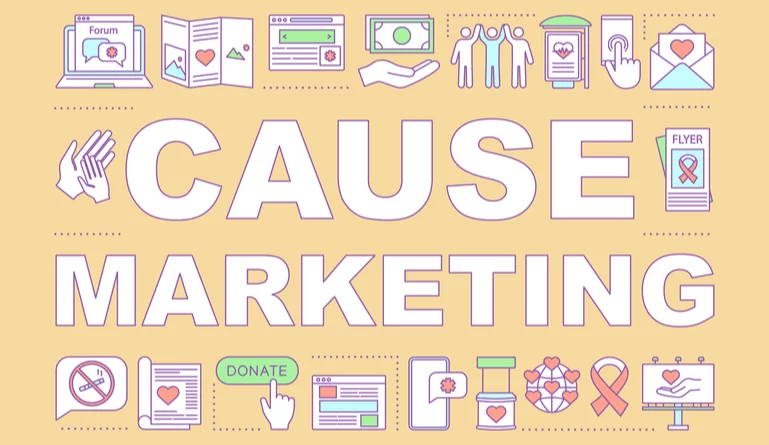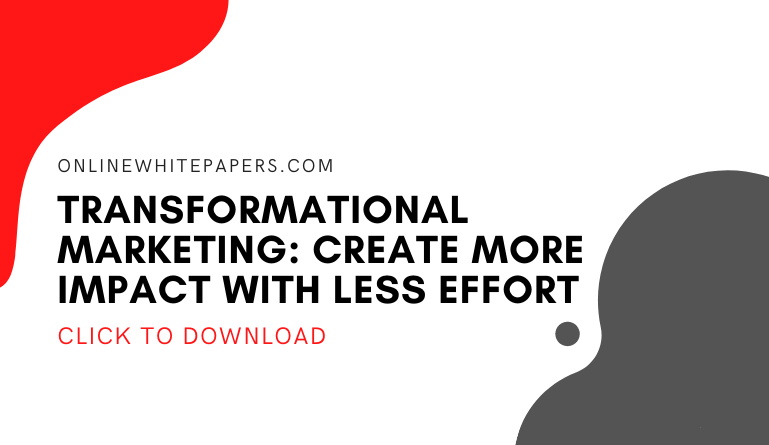The first thing one might associate with the word cause is “effect.” Another term linked to the word cause is “action.” There are plenty of societal issues that have an impact on the world around us. Poverty, racism, sexism, war, addiction, global warming, sickness, etc. are problems that have had an effect on people’s lives from all backgrounds. Cause marketing is not only about acknowledging the source of the world’s ills but attempting to do something about it through taking action by helping to fund organizations dedicated to tackling these problems.
Why is Cause Marketing Important?
While most business marketing initiatives try to gain the attention of a consumer base by only showcasing the product and the benefits of using it through ethos (legitimacy) and logos (logic), cause marketing appeals to consumers through pathos (emotion).
This is often done by bringing awareness to an issue and providing an avenue to give money to charities, non-profits, and social movements by purchasing their products. Although the push to buy a product is still there, the incentive of giving to a great cause gives consumers the feeling that they have done something good. Capitol Media Strategies notes, “90% of consumers are likely to switch brands to one associated with a good cause.”
History of Cause Marketing
Although the conception of cause marketing is attributed to the well-known 1983 campaign by card company “American Express” in which the initiative was to refurbish the Statue of Liberty, there has been a series of cause marketing campaigns as early as the 1960s and ’70s (even though they were not labeled as cause marketing during that period).
According to the “Selfish Giving” blog, beginning in 1966, Jerry Lewis’ Labor Day Telethon for MS (think mid-20th century version of the Ice Bucket Challenge) in partnership with the Muscular Dystrophy Association might have been the earliest known example of a cause marketing campaign. With a monopoly on the television schedule due to lack of cable and streaming channels, this event had millions of people’s attention and businesses, of course, took advantage of this by getting involved with the program and the cause through ads.
In 1976, the goal of the partnership between Marriot and March of Dimes was to promote the debut of the former’s theme park, “Great America”, in California while the latter wanted to raise money for its yearly walk for children and mothers. “March of Dimes received $2.5 million in donations (a 40% increase) and the opening day for Great America was attended by 2.2 million people” (Capitol Media Strategies).
There are more innovative initiatives before the American Express campaign, like the partnership between Famous Amos Cookies and Literacy Volunteers of America to raise awareness and fund programs to curb illiteracy through utilizing founder Wally Amos as a spokesperson for ads.
Types of Cause Marketing Campaigns
There are several types of cause marketing campaigns to consider when understanding or planning to do this type of marketing:
-
Transactional campaigns:
Based on certain circumstantial events within the social and marketing environment or behaviors of its consumer base, a business will give a wide-spread notification of its, often one-time, donation to an organization or charity to promote the cause
-
Digital campaigns:
Utilizing websites and other online media platforms to advertise and bring awareness to causes and raise funds
-
Licensing:
A business can use its product as an ad for a charity or non-profit entity by getting permission and purchasing rights to place the image on said product. Every time a customer would purchase said product, some of the money would go straight to funding the organization.
-
Message Focused campaigns:
When a business uses its marketing capabilities to give awareness to a message that is attached to or affiliated with a cause. It can also help consumers gain knowledge about local organizations fighting for said causes and how they can get involved.
-
Events:
Of course, businesses can team up with an organization to plan an event to raise awareness and money. Whether it is through telethon, marathon, sporting, or auctioning events, putting something together that will attract a large audience can be an important aspect of a successful cause marketing campaign.
Advantages of Cause Marketing for Businesses of all sizes include:
- Bringing attention to a business and the products/services that they offer
- A rise in profits from sales
- Reaching more potential customers
- Helps business stand out (in a good way) from industry rivals
- The profile of the business and the cause increases in the public arena
- Raised worker retention
- Initiatives can be utilized in recruiting practices
- Gain new allies
- Acquire specialized skills from teaming up with cause organizations
- Able to establish connections with the common people
- Become the industry standard
- Taking a stand on social issues for the greater good
The Strategy of Cause Marketing
Select a cause that you value
- Do not choose to get behind a cause just because it is popular at the moment. Thanks to social media, consumers can research past behaviors of companies to see if their practices have contributed positively or negatively to the cause. Think about all of the companies who blacked out their profiles in support of Black Lives Matter in the summer of 2020 just to be exposed for not having a substantial amount of Black employees within the ranks.
Partner with a cause that makes sense for your brand
- Think about the partnership between Marriott and the organization March of Dimes earlier in this piece. March of Dimes caters to the health and well-being of mothers and children and Marriott was planning on opening a theme park. Who is the main target audience for a theme and amusement parks? Children…Who are the ones that often take children to theme parks? Their families…specifically their mothers.
Do not just throw funds at a cause
- Help to cultivate programs that will advance a cause in terms of awareness through ads and providing facilities and resources for things like scientific research, shelters, soup kitchens, etc. Be a nurturing platform for organizations so that they can expand to help as many people as possible. This can be especially helpful for smaller nonprofits and charities. Money is good, but funds need to be cultivated for maximum capabilities.
Team up with philanthropic organizations
- Being that philanthropies use funds for the greater good instead of for personal profit, traditional for-profit businesses can use their resources like advertising dollars, social media platforms, built-in audiences, etc. to help an organization gain the attention that they otherwise would not have without intervention. Work together on campaigns and other initiatives for the mutual benefit of both the business and the non-profit.
Focus on digital and earned content
- Utilize platforms that already have a large, built-in audience through traditional platforms like television, print, and radio and digital platforms like testimonies on Twitter, review sites, and blogs. Businesses do not have to pay out of pocket for this type of exposure due to having a large presence in the industry.
Cause marketing examples
-
Maker’s Mark & One Warm Coat “Give Cozy, #GetCozy” Truck Tour:
In the winter of 2015, the company Maker’s Mark teamed up with the charity One Warm Coat to provide a truck in which passersby could exchange their previously worn but well-conditioned coats, jackets, and other winter accessories for winter-themed drinks (hot chocolate). Social media was utilized to spread awareness to the campaign through hashtags and pictures/videos to capture it as it happened across different states and cities.
-
The Economist’s Pride & Prejudice Event:
5 years ago, the global newspaper platform, founded Pride & Prejudice, an all-day event catered to members of the LGBT+ community to advocate for their increased participation and fair treatment within federal entities, business operations, and political institutions across the world.
-
Lush and the Spy Cops Campaign:
British beauty company Lush organized a campaign against corrupt police officers overstepping the privacy of community activists by placing images of police, in uniform on one side and in civilian clothes on the other, on the glass windows of some of its stores and used the hashtag #spycops to bring attention to their initiative on social media.
Despite threats to boycott and the swift backlash by some of its customers, Lush experienced a huge jump in social media mentions online and in turn, brought attention to those who were targeted by police and quickly gained political and social allies. Lush also experienced a huge increase in sales due to the unusual amount of attention and dialogue that they started with the Spy Cop campaign.
Final Thoughts
Marketing for a cause can not only be beneficial for a business but for non-profit organizations as well. Not only can working with causes and charities increase the sales of businesses, but it can also enhance their brands and establish a good reputation with the industry and with consumers. Producing a marketing campaign must be well-thought-out and accomplish a goal that serves the people.
It must stimulate their emotions (whether good or bad). Anything that triggers the brain makes it memorable to the human conscience. A cause campaign may spread happiness, give a somber mood, and spark anger. But, as long as the cause within the campaign becomes known on a large scale, then essentially the initiative will be a success.






